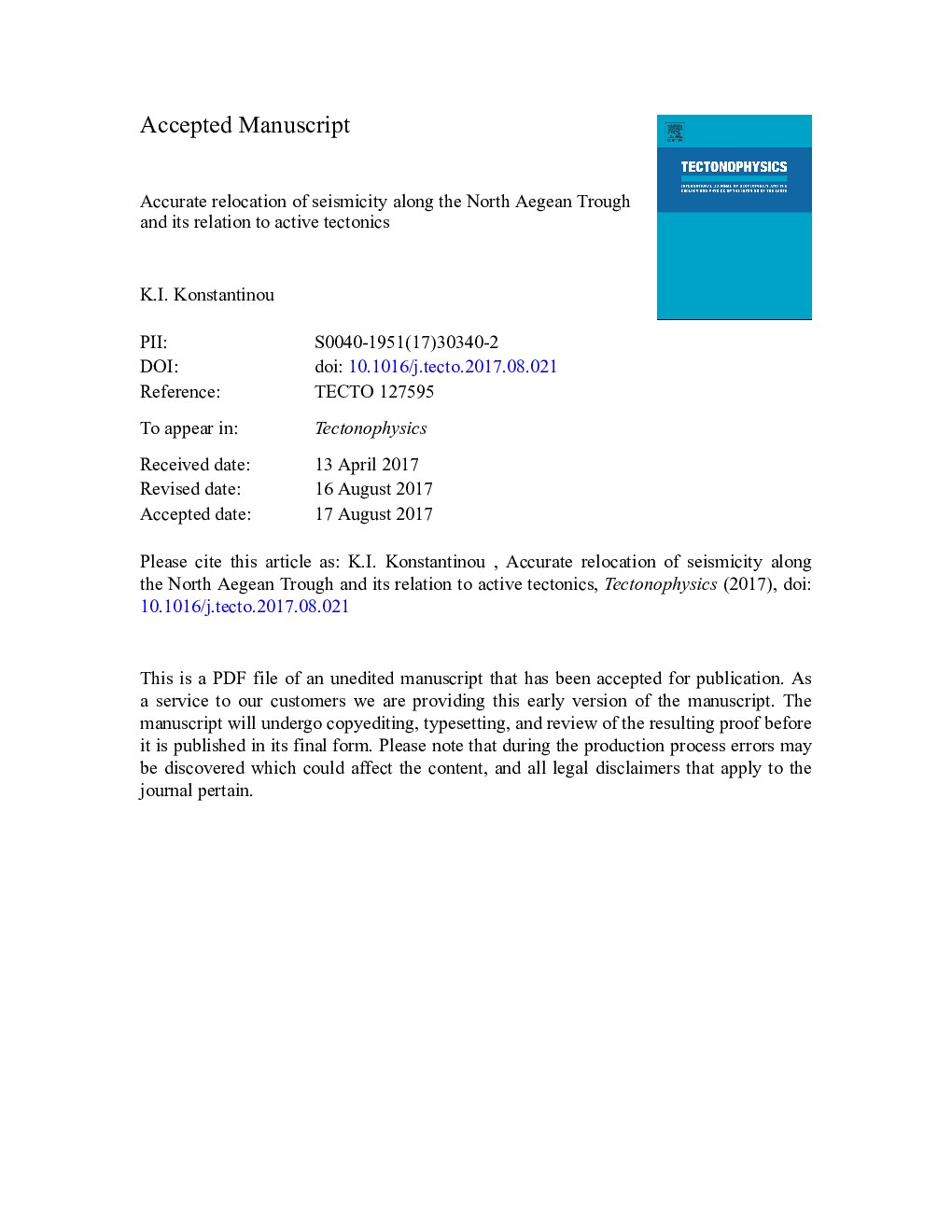| کد مقاله | کد نشریه | سال انتشار | مقاله انگلیسی | نسخه تمام متن |
|---|---|---|---|---|
| 5781481 | 1636691 | 2017 | 42 صفحه PDF | دانلود رایگان |
عنوان انگلیسی مقاله ISI
Accurate relocation of seismicity along the North Aegean Trough and its relation to active tectonics
ترجمه فارسی عنوان
جابجایی دقیق لرزه خیزی در امتداد دریای اژه شمالی و ارتباط آن با تکتونیک فعال
دانلود مقاله + سفارش ترجمه
دانلود مقاله ISI انگلیسی
رایگان برای ایرانیان
کلمات کلیدی
اژه یونان، لرزه خیزی، عمق قفل
موضوعات مرتبط
مهندسی و علوم پایه
علوم زمین و سیارات
فرآیندهای سطح زمین
چکیده انگلیسی
The tectonics of northern Aegean are affected by the westward push of Anatolia and the gravitational spreading of the Aegean lithosphere that promote transtensional deformation in the area. This regime is also responsible for the creation of a series of pull-apart basins, collectively known as the North Aegean Trough. This work accurately relocates a total of 2300 earthquakes that were recorded along the North Aegean Trough during 2011-2016 by stations of the Hellenic Unified Seismic Network (HUSN) and strong-motion sensors. Absolute locations for these events were obtained using a nonlinear probabilistic algorithm and utilizing a minimum 1D velocity model with station corrections. The hypocentral depth distribution of these events shows a peak at 8Â km diminishing gradually down to 20Â km. A systematic overestimation of hypocentral depths is observed in the routine locations provided by the National Observatory of Athens where the majority of events appear to be deeper than 15Â km. In order to obtain more accurate relative locations these events were relocated using the double-difference method. A total of 1693 events were finally relocated with horizontal and vertical uncertainties that do not exceed 0.11Â km and 0.22Â km respectively. Well-defined clusters of seismicity can be observed along the Saros and Sporades basins as well as the Kassandra and Sithonia peninsulas. These clusters either occur along the well-known NE-SW strike-slip faults bounding the basins, or along normal faults whose strike is perpendicular to the regional minimum stress axis. Locking depth along the North Aegean Trough is found to be remarkably stable between 13 and 17Â km. This is likely a consequence of simultaneous reduction along the SW direction of heat flow (from 89 to 51Â mW/m2) and strain rate (from 600 to 50Â nstrain/yr) whose opposite effects are canceled out, precluding any sharp changes in locking depth.
ناشر
Database: Elsevier - ScienceDirect (ساینس دایرکت)
Journal: Tectonophysics - Volume 717, 16 October 2017, Pages 372-382
Journal: Tectonophysics - Volume 717, 16 October 2017, Pages 372-382
نویسندگان
K.I. Konstantinou,
